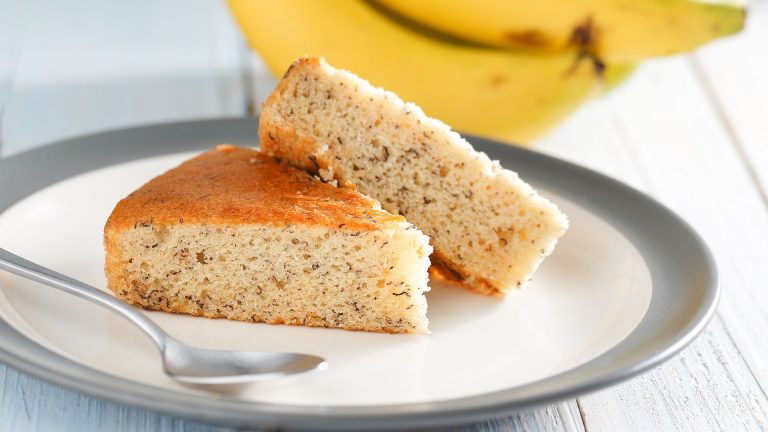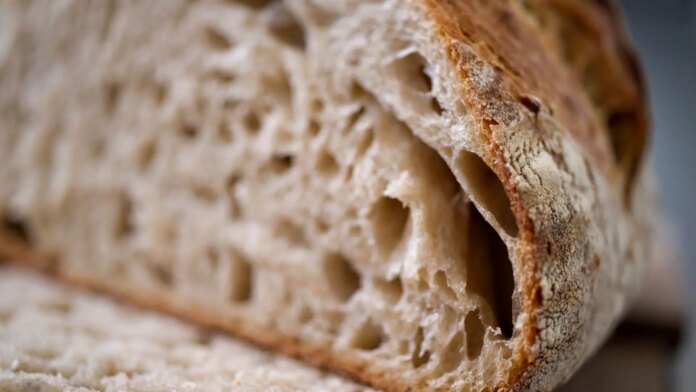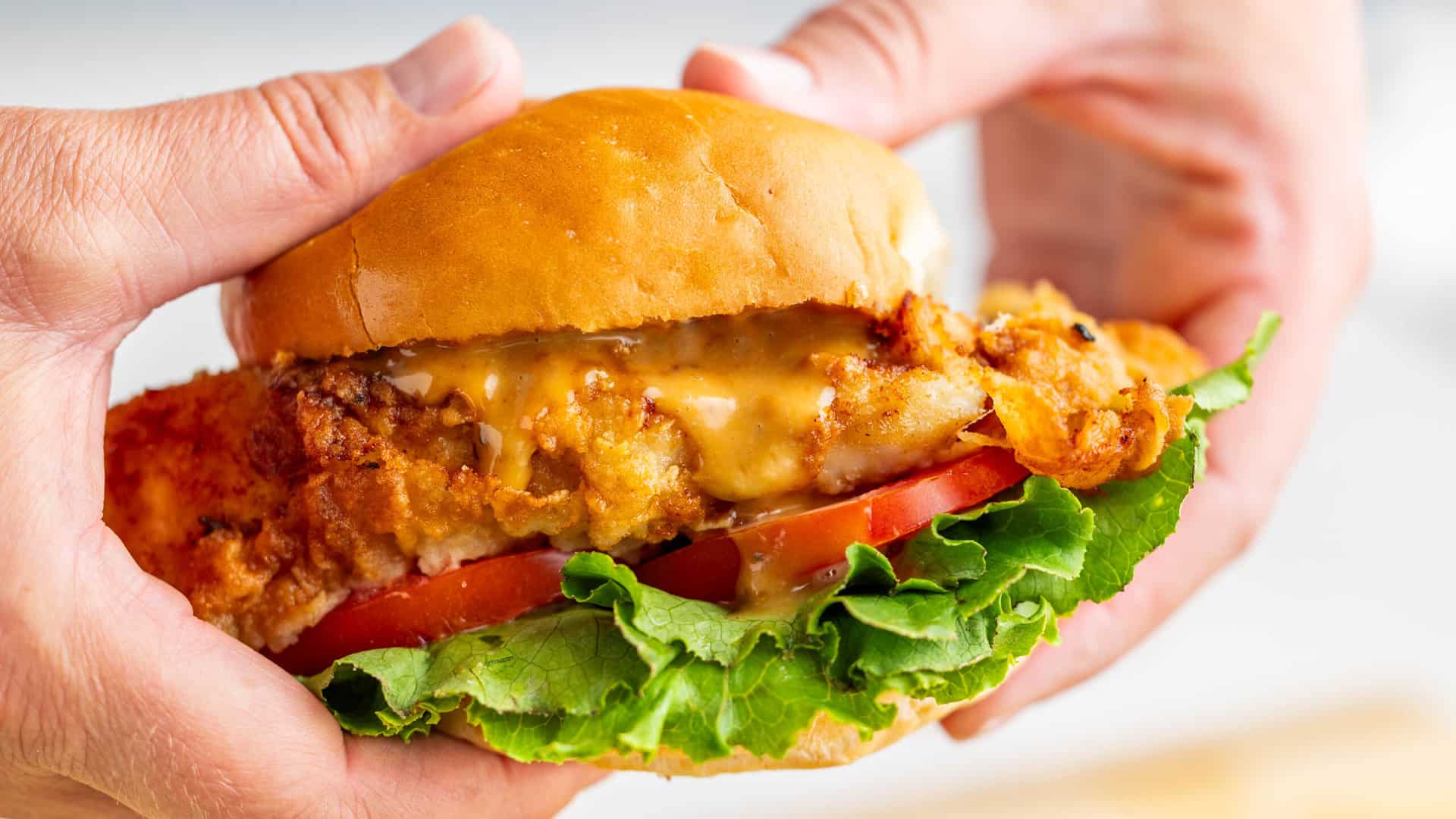For these managing gluten sensitivity or celiac illness, the prospect of having fun with a slice of hearty sourdough bread sparks deep longing but poses vexing questions. With sourdough’s rising recognition and digestibility claims, many marvel if it may present a gluten-free bread choice or stay strictly off limits. Arm your self with data so you may thoughtfully discover if this artisanal darling deserves a spot at your gluten-free desk. Now dive in as we settle the talk – can sourdough really be gluten-free or not?

Desk of Contents
Is Sourdough Bread Gluten Free?
Let’s get this query out of the best way: there isn’t a such factor as 100% gluten-free sourdough bread. Sourdough bread incorporates much less gluten than your common bread, particularly if it’s been lengthy fermented. There are alternatives to make use of non-gluten starter to make sourdough bread. However people who find themselves very gluten-sensitive ought to nonetheless keep away from sourdough.
Let’s get into the main points.
Gluten Content material in Sourdough Bread
Sourdough bread has a popularity for being simpler to digest than common bread for these delicate to gluten. However can sourdough really be thought-about gluten-free?
The reply lies in understanding precisely how gluten kinds throughout the bread making course of.
Gluten Growth in Bread
Gluten is a protein composite that provides bread its chewy texture. It’s fashioned when the proteins gliadin and glutenin, which exist individually in flour, mix collectively and kind cross-links throughout kneading or mixing. This networking of proteins is what permits dough to rise and provides baked items their construction. Extra gluten growth ends in chewier bread.
With common yeasted bread, industrial yeast is added to dough to provide air bubbles that make bread rise. The aggressive mixing wanted to distribute the yeast causes proteins to cross-link quickly and produce a number of gluten.
The Function of Fermentation
Sourdough bread depends on naturally occurring yeasts and micro organism for leavening as a substitute of economic yeast. These “wild” microbes should be fed, so sourdough begins start fermenting a day or extra earlier than baking.
Throughout fermentation, enzymes break down advanced molecules like starch and protein. In wheat, the enzyme protease breaks down gluten proteins into smaller items. Since gluten solely kinds when gliadin and glutenin hyperlink up, this breakdown means there may be much less intact glutenin and gliadin to affix collectively. In essence, fermentation pre-digests the gluten earlier than you ever take a chunk.
The longer the fermentation time (like in my lengthy fermentation sourdough bread recipe), the extra gluten will get damaged down. In a single examine, 24 hours of fermentation removed nearly 50% of gluten from wheat bread.
Sourdough Isn’t Gluten-Free
Regardless of having lowered gluten content material, nearly all sourdough bread nonetheless incorporates gluten and is not secure for these with celiac illness or gluten sensitivity. One examine discovered gluten ranges in sourdough loaves starting from almost 15,000 ppm all the way down to 111 ppm. In distinction, FDA laws stipulate meals should meals-labeling-laws/” goal=”_blank” data-type=”hyperlink” data-id=”https://www.beyondceliac.org/gluten-free-diet/food-labeling-laws/#:~:textual content=Understandingpercent20Lesspercent20Thanpercent2020percent20Partspercent20Perpercent20Millionpercent20(PPM)&textual content=Atpercent20thispercent20timepercent2Cpercent20nopercent20validated,withpercent20thepercent20geneticpercent20autoimmunepercent20disease.” rel=”noreferrer noopener nofollow”>include lower than 20 ppm of gluten to be labelled gluten-free.
Nonetheless, some preliminary analysis signifies the altered gluten in long-fermented sourdough could also be simpler to digest and fewer more likely to provoke immune responses for these delicate to gluten. Extra research are wanted to verify these findings.
So whereas artisan-style sourdough created from wheat flour can’t be thought-about gluten-free, its altered gluten chemistry could present a extra tolerable type of bread for some with gluten points. Utilizing Heritage grains like einkorn wheat, which has completely different gluten proteins than trendy wheat, can additional scale back points. These extraordinarily delicate ought to train warning and seek the advice of their physician earlier than attempting sourdough.

Myths and Misconceptions about Gluten in Sourdough
With all the excitement round sourdough and digestibility, a number of myths have cropped up implying that sourdough bread is gluten-free. However how a lot reality is there to those claims?
Fable #1: All Sourdough Is Gluten-Free
That is fingers down one of many greatest misconceptions on the market. The fact is NO sourdough created from wheat flour could be thought-about 100% gluten-free.
Whereas the fermentation course of does break down an honest chunk of gluten, there may be all the time residual gluten remaining. One examine discovered gluten ranges between 111 ppm to just about 15,000 ppm throughout completely different sourdoughs.
To place that into perspective, the FDA stipulates meals should include lower than 20 ppm of gluten to be labelled gluten-free. So sourdough doesn’t even come near assembly that threshold.
Fable #2: Sourdough Has the Identical Gluten Content material As Common Bread
On the flip aspect, claims that sourdough incorporates simply as a lot gluten as common yeasted bread are additionally inaccurate. A number of research have substantiated that lengthy fermentation considerably reduces gluten ranges by upwards of fifty% in some instances.
So whereas sourdough isn’t gluten-free, it tends to have markedly much less gluten than different leavened bread. This lowered content material could present aid to these much less delicate. However these with celiac illness nonetheless have to abstain as their response threshold could be as little as 10-50 mg per day.
Fable #3: All Sourdough Is Equally Digestible
This delusion assumes that every one sourdough has equally “secure” gluten ranges or improved digestibility. In actuality, sourdough runs the gamut when it comes to gluten content material and digestibility impacts.
Components like the kind of flour, size of fermentation time, use of economic vs wild yeast, and small vs massive bakeries can considerably alter outcomes.
As an example, a bakery that makes use of principally white bread flour and permits solely an 8 hour rise will produce a really completely different loaf than one utilizing historic heritage grains and 48+ hour chilly fermentation.
Digestibility can even range broadly based mostly on the person. So there are not any ensures that one sourdough formulation will work for everybody with gluten points.
Takeaways on Sourdough Myths
Whereas the notion of a gluten-filled, but simply digestible bread sounds preferrred to many coping with gluten points, sourdough will not be a clear-cut resolution. Outcomes rely tremendously on the manufacturing strategies and shopper’s private tolerance.
Reasonably than shopping for into myths, these with gluten considerations ought to method sourdough with warning beneath medical steerage. Focusing on bakeries utilizing correct artisan methods and heritage grains could present higher odds of tolerability.
For almost all of gluten delicate people although, sourdough probably falls into a gray space that have to be examined fastidiously to find out if it may be a part of a gut-friendly food regimen.

Easy methods to Inform if Sourdough is Gluten-Free
With a lot confusion round gluten content material in sourdough, how will you really know if a loaf is gluten-free? Whereas testing kits and correct labeling may also help present solutions, doing all of your homework on elements and manufacturing strategies is vital.
Studying the Label
Begin by checking if the sourdough packaging has any gluten-free certifications or labels. In the USA, search for the Licensed Gluten-Free mark from GFCO, typically denoted by an ear of wheat inside a circle. Producers paying for certification testing should meet requirements verifying lower than 10ppm of gluten.
It’s also possible to scan the elements record, however don’t cease there. Some producers make gluten-free sourdough from historic grains like einkorn or gluten-free flours however don’t label it as gluten-free.
Researching Elements
Talking of elements, going past the label to know precisely what flours are used can provide extra clues.
Heritage grains like einkorn have completely different gluten constructions than trendy wheat and trigger fewer points for some of us. Different gluten-free choices embody cassava, almond, and chickpea flours. Sourdoughs made solely from these elements needs to be dependable.
Nonetheless, “wheat flour” or “bread flour” indicators customary wheat with gluten is current. Rye and barley additionally include gluten. In the event you spot any of those, tread cautiously. Cross-contamination can also be probably in services processing a number of grains.
Getting Testing Kits
In the event you nonetheless have doubts or are extremely delicate, residence take a look at kits may also help detect traces of gluten. Probably the most delicate choices use ELISA antibody know-how to seek out as little as 5 to 10 ppm of gluten in meals. Whereas pricier than primary kits, they provide probably the most definitive solutions.
Sampling correctly is essential when testing sourdough with kits. Make sure you collect crumbs from your entire inside of the loaf, avoiding cross-contaminated surfaces. You desire a thorough studying since gluten ranges in sourdough can range in several areas.
When in Doubt, Make it Your self
In the end, producing your personal gluten-free sourdough could also be the easiest way for these extremely delicate to manage the end result fully.
Discover recipes utilizing licensed GF flours and guarantee your baking instruments are uncontaminated. Permit for further lengthy fermentation occasions to interrupt down residual glutenin/gliadin complexes. Then get pleasure from worry-free do-it-yourself sourdough bread!

Gluten-Free Options to Sourdough
Whereas sourdough reveals promise for improved gluten tolerance, it nonetheless incorporates gluten and isn’t appropriate for all. Fortunately, improvements in gluten-free bread making provide tasty options.
breads“>Seeded & Historical Grain Breads
Seeded breads make the most of gluten-free grains like millet, sorghum, buckwheat, amaranth, teff, and quinoa. Mixing a range creates nutty taste and hearty texture much like multigrain wheat breads.
Historical grains like einkorn are kin to trendy wheat however typically higher tolerated. Einkorn’s completely different gluten construction and further protein content material mimics complete wheat taste in a safer kind.
Manufacturers like Canyon Bakehouse use customized blends of seeds, nuts, and historic grains to craft bakery-style sliced breads, baguettes, and rolls. The varieties give gluten-free followers their seeded bread repair.
Nut & Root Vegetable Bread
Breads based mostly on nuts, tubers, and root veggies provide a impartial backdrop for gluten-free loaves. Almonds and chickpeas add protein and wholesome fat. Starch-rich roots like tapioca, cassava, potato, and candy potato assist bind and aerate the dough.
Firms like Schar focus on traditional white and complete grain bread tastes by expertly balancing nut and root elements. Their merchandise match the style and look of wheat bread with licensed gluten-free assurance.
Various Grain Flatbreads
A last class tailored for gluten-free diets is flatbreads. Courser grain flours and minimal mixing retains these unleavened breads tender. Teff and buckwheat work effectively as pizza crust replacements.
Fingers-on options like Bob’s Purple Mill provide gluten-free pizza dough, naan, chapatti, and tortilla combine kits. DIY flatbreads imply customizing flavors precisely to your tastes. Most recipes require simply primary elements and fast stovetop cooking.
Easy methods to Make Sourdough Gluten-Free
Whereas most artisan sourdough incorporates gluten, utilizing specialty elements and cautious method makes crafting gluten-free loaves potential.
Comply with these steps for worry-free do-it-yourself sourdough.
Select Gluten-Free Flours
Naturally gluten-free flours present the muse for gluten-free sourdough. Good choices embody:
- Brown rice flour – Impartial taste
- Sorghum flour – Heartier style
- Cassava flour – Starchy and binding
- Chestnut flour – Nutty and candy
- Quinoa flour – Protein punch
Goal for flour blends that stability flavors and textures. Keep away from bean, garbanzo, almond, and coconut flours as their distinct tastes overwhelm sourdough.
Craft a GF Sourdough Starter
A starter tradition kickstarts sourdough’s fermentation. Most conventional starters include wheat or rye flour.
Make a gluten-free model by combining brown rice or sorghum flour with non-chlorinated water in a jar. Permit to ferment for 48 hours, stirring sometimes, till bubbly. Then start common feedings with extra flour and water.
Keep your tradition’s microbes by feeding it day by day. After per week it’s going to develop right into a effervescent gluten-free starter excellent for baking.
Knead & Proof Dough Gently
When mixing and proofing, deal with gluten-free dough gently to keep away from overworking. Knead simply till the elements come collectively in a shaggy mass – don’t anticipate gluten growth.
And provides dough ample ground time. Most gluten-free sourdough recipes contain an in a single day proof within the fridge for taste and construction. Yeast motion strengthens the community over time.
Bake Totally
Gluten-free loaves bake in another way than wheat bread. Set your oven 25 levels decrease, bake 10 minutes longer, and take a look at doneness with an instant-read thermometer to hit an inside temp of 208°F.
The decrease temp permits exterior crust formation earlier than the within overbakes. And gluten-free dough wants that further oven spring for an ethereal crumb texture.
Retailer Correctly
With out gluten, GF sourdough stales shortly. Cool fully earlier than slicing. Retailer lower sides down on the counter for same-day consumption and freeze remaining slices.
To recrisp slices, toast immediately from frozen. And by no means refrigerate or freeze unsliced loaves as moisture ruins the crust.
With specialty flours, mild dealing with, and customised baking, you may savor tasty do-it-yourself sourdough sans gluten. Regulate recipes as wanted based mostly in your local weather, oven, and private tolerance.
- BEGINNER FRIENDLY: Sourdough is likely one of the most forgiving cultures to work with, making it an awesome alternative for learners or breadmaking professionals. Plus, this dehydrated tradition provides you an opportunity to get acquainted with feeding your starter earlier than its time to bake!
- HEIRLOOM STYLE: With correct care, our sourdough starter could be reused indefinitely to leaven baked items, making it simple so that you can create scrumptious bread time and again.
- VERSATILE: Make extra than simply artisan bread! Use this starter to attempt your hand at creating scrumptious gluten free pizza, gluten free cookies, and different tasty gluten free snacks.
- HEALTH BENEFITS: Sourdough will not be solely a low carb bread, but in addition supplies an awesome supply of nutritional vitamins and minerals. Plus, completed loaves are chock stuffed with prebiotics, which assist promote higher intestine well being.
- SAFE: Every batch is pathogen examined by a trusted third-party laboratory so you already know you might be getting a top quality, wholesome starter to make nice baked items at ho
Costs pulled from the Amazon Product Promoting API on:
Product costs and availability are correct as of the date/time indicated and are topic to vary. Any value and availability data displayed on [relevant Amazon Site(s), as applicable] on the time of buy will apply to the acquisition of this product.
Sourdough is Not Fairly Gluten Free
Sourdough bread falls right into a grey space relating to gluten content material and sensitivity. Whereas the fermentation course of does alter the gluten to some extent, nearly no sourdough could be thought-about 100% gluten-free.
Nonetheless, research present prolonged fermentation can scale back gluten ranges considerably in comparison with common yeasted bread. For people with extra average gluten sensitivity, indulging in long-fermented sourdough could present aid with out triggering extreme reactions. These extremely delicate ought to nonetheless keep away from it altogether or train excessive warning beneath medical steerage. Outcomes additionally rely closely on the precise flour used and manufacturing strategies.
Ultimately, navigating gluten points comes all the way down to an individualized method based mostly on medical historical past and distinctive sensitivity ranges. Blanket options not often apply. All of us should discover our personal paths – even after they wind in several instructions than the newest meals tendencies may counsel.
FAQs
Is Sourdough OK For Gluten Intolerance?
Sure you may eat sourdough when you’re gluten illiberal. Sourdough is a fermented product. Basically, it’s a course of that breaks down the gluten within the flour and makes sourdough bread secure for folks with gluten intolerance.
What Breads are Naturally Gluten Free?
Some breads which might be historically gluten free embody: cassava bread, potato bread, and chickpea bread.
Is Sourdough Bread Inflammatory?
Sourdough bread is anti-inflammatory, with wealthy nutritional vitamins that may simply be digested.
Why Can Celiacs Eat Sourdough Bread?
Although sourdough bread isn’t gluten free, the strategies used to make sourdough bread break down among the gluten within the flour which is why it’s appropriate to eat for individuals who undergo from celiac illness.
Is Sourdough Bread Good for Your Intestine?
Sourdough bread could be useful for intestine well being attributable to its fermentation course of, which can support in digestion and improve nutrient absorption.
Is Sourdough Bread Wholesome?

- 3 ripe bananas
- 1/3 cup melted coconut oil
- 1/2 cup gluten free sourdough starter
- 1 cup sorghum flour
- 1/2 cup tapioca flour
- 3/4 cup candy rice flour
- 1 egg
- 3 tbsp honey
- 2 tsp vanilla
- 2 tsp floor cinnamon
- 3/4 tsp sea salt
- 3/4 tsp baking soda
- Mash the bananas in a medium mixing bowl, then stir within the coconut oil, gluten free starter, and flours. Mix effectively till a gentle dough has fashioned.
- Cowl and permit to ferment for six to 12 hours.
- When you’re able to bake, preheat the oven to 350F, and butter a baking tin.
- Add the egg, honey, vanilla, cinnamon and salt to the fermented dough. Combine the elements till effectively mixed, then add a drizzle of baking soda.
- Scrape the butter right into a ready baking dish and place within the oven baking for half-hour.
- Prep Time: 12 hrs
- Cook dinner Time: 30 minutes
- Class: dessert
- Weight loss program: Gluten Free
Vitamin
- Serving Measurement: 1 slice
- Energy: 200 kcal
- Fats: 7.3 g
- Carbohydrates: 32 g
- Protein: 2.5 g








